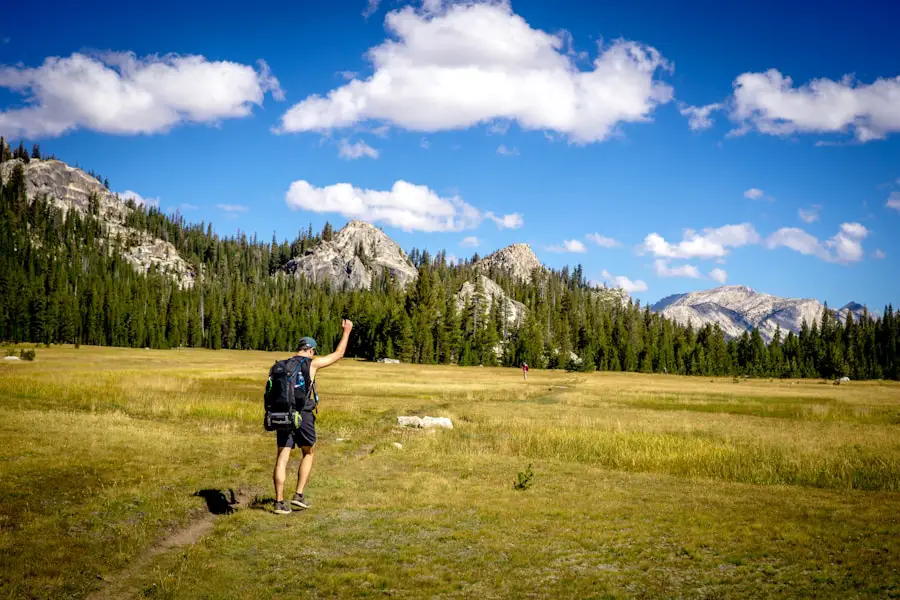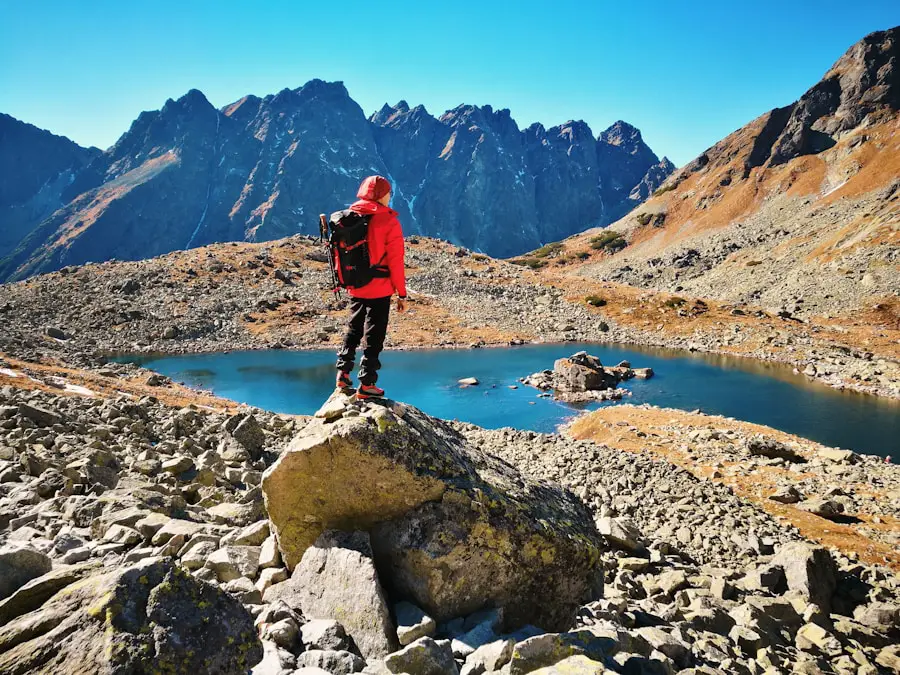High altitude is generally defined as elevations above 8,000 feet (2,400 meters), where the atmosphere becomes thinner and the air pressure decreases significantly. This reduction in atmospheric pressure leads to a decrease in the availability of oxygen, which can have profound effects on the human body. As one ascends to higher altitudes, the body must adapt to these changes, a process known as acclimatization.
Acclimatization involves physiological adjustments such as increased breathing rate, elevated heart rate, and changes in blood chemistry to enhance oxygen delivery to tissues. However, not everyone acclimatizes at the same rate, and some individuals may experience altitude sickness, which can manifest as headaches, nausea, dizziness, and fatigue. The physiological effects of high altitude can vary widely among individuals.
Some may thrive in these conditions, while others may struggle significantly. For instance, the risk of developing Acute Mountain Sickness (AMS) increases with rapid ascents and inadequate acclimatization. AMS can progress to more severe forms of altitude sickness, such as High Altitude Pulmonary Edema (HAPE) and High Altitude Cerebral Edema (HACE), both of which can be life-threatening if not addressed promptly.
Understanding these risks is crucial for anyone planning to hike at high altitudes, as it underscores the importance of gradual ascent and awareness of one’s physical condition.
Key Takeaways
- High altitude can have various effects on the body, including altitude sickness, dehydration, and decreased oxygen levels.
- Physical conditioning, including cardiovascular and strength training, is essential for preparing the body for high altitude hiking.
- Mental preparation, such as setting realistic expectations and practicing mindfulness, can help hikers cope with the challenges of high altitude.
- Proper nutrition and hydration, including consuming enough calories and fluids, are crucial for maintaining energy and preventing altitude sickness.
- Essential gear for high altitude hiking includes proper footwear, clothing layers, navigation tools, and emergency supplies such as a first aid kit and communication devices.
Physical Conditioning for High Altitude Hiking
Cardiovascular Endurance
A well-rounded conditioning program should focus on building cardiovascular endurance, strength, and flexibility. Cardiovascular training can include activities such as running, cycling, or swimming, which help improve the efficiency of the heart and lungs. Incorporating interval training can also be beneficial, as it mimics the exertion levels experienced during steep ascents and descents on the trail. Aim for at least 30 minutes of moderate to vigorous aerobic exercise several times a week, gradually increasing intensity and duration as fitness improves.
Strength Training
Strength training is equally important for high altitude hiking. Building muscle strength in the legs, core, and upper body can enhance stability and endurance on rugged terrain. Exercises such as squats, lunges, deadlifts, and step-ups can help develop the necessary strength for climbing steep trails and carrying a backpack. Additionally, incorporating exercises that target the core muscles will improve balance and posture, which are vital when navigating uneven surfaces.
Flexibility and Injury Prevention
Flexibility training through yoga or stretching routines can also aid in preventing injuries and improving overall mobility. By incorporating these exercises into your conditioning program, you can ensure a safe and enjoyable high altitude hiking experience.
Mental Preparation for High Altitude Hiking

Mental preparation is often overlooked but is just as critical as physical conditioning when it comes to high altitude hiking. The psychological challenges posed by altitude can be significant; feelings of anxiety or fear may arise due to the unfamiliar environment or physical discomfort. Developing mental resilience can help hikers cope with these challenges effectively.
Visualization techniques can be particularly useful; by imagining oneself successfully navigating difficult sections of a trail or reaching a summit, hikers can build confidence and reduce anxiety. Mindfulness practices such as meditation or deep-breathing exercises can also enhance mental preparedness. These techniques help individuals stay present and focused during their hike, allowing them to manage stress and fatigue more effectively.
Additionally, setting realistic goals for each hiking day can foster a positive mindset. Instead of fixating solely on reaching a summit, hikers should celebrate smaller milestones along the way, such as completing a challenging section of trail or enjoying a scenic viewpoint. This approach not only enhances motivation but also encourages a deeper appreciation for the journey itself.
Nutrition and Hydration at High Altitude
| Metrics | Low Altitude | High Altitude |
|---|---|---|
| Caloric Intake | 2500-3000 calories/day | 3000-3500 calories/day |
| Fluid Intake | 8-10 cups of water/day | 10-12 cups of water/day |
| Carbohydrate Consumption | 55-65% of total calories | 60-70% of total calories |
| Protein Consumption | 10-15% of total calories | 15-20% of total calories |
| Fat Consumption | 20-30% of total calories | 20-25% of total calories |
Proper nutrition and hydration are paramount when hiking at high altitudes due to increased energy demands and the risk of dehydration. At higher elevations, the body’s metabolism accelerates, requiring more calories to sustain energy levels. It is advisable to consume a diet rich in carbohydrates, proteins, and healthy fats to fuel physical exertion.
Carbohydrates are particularly important as they provide quick energy; foods like whole grains, fruits, and energy bars should be staples in a hiker’s diet. Protein sources such as nuts, jerky, and protein bars can aid in muscle recovery after strenuous hikes. Hydration is equally critical at high altitudes since the body loses moisture more rapidly due to increased respiration rates and lower humidity levels.
Hikers should aim to drink water consistently throughout the day rather than waiting until they feel thirsty. Electrolyte-rich drinks can also be beneficial in replenishing lost minerals and maintaining hydration balance. It is essential to monitor urine color as an indicator of hydration status; pale yellow urine typically signifies adequate hydration while dark urine indicates dehydration.
Gear and Equipment for High Altitude Hiking
Selecting appropriate gear and equipment is vital for ensuring safety and comfort during high altitude hikes. Footwear is one of the most critical components; sturdy hiking boots with good ankle support are essential for navigating rocky terrain and preventing injuries. It is advisable to break in new boots before embarking on a long hike to avoid blisters and discomfort.
Additionally, moisture-wicking socks can help keep feet dry and reduce the risk of blisters. Clothing layers are also crucial for adapting to rapidly changing weather conditions at high altitudes. A base layer that wicks moisture away from the skin should be followed by an insulating layer for warmth and an outer shell that provides protection against wind and rain.
Accessories such as hats, gloves, and sunglasses are important for protecting against sun exposure and cold temperatures. A well-equipped backpack should include essentials like a first aid kit, navigation tools (map and compass or GPS), extra food, water purification methods, and emergency supplies.
Techniques for High Altitude Hiking

Pacing and Resting
One effective strategy is pacing oneself; maintaining a steady pace rather than rushing can help conserve energy and reduce fatigue. It is advisable to take regular breaks to rest and hydrate, especially during steep ascents where exertion levels are higher.
Acclimatization and Stability
The “climb high, sleep low” principle is another technique that promotes acclimatization; this involves ascending to higher elevations during the day but returning to lower altitudes to sleep. Additionally, using trekking poles can provide stability and reduce strain on the knees during descents. They can also assist with balance on uneven terrain and help distribute weight more evenly across the body.
Navigating and Breathing
Learning how to navigate switchbacks effectively—by taking wide turns rather than cutting corners—can conserve energy while climbing steep trails. Practicing proper breathing techniques is also essential; deep belly breathing can enhance oxygen intake and improve overall endurance.
Safety and Emergency Preparedness at High Altitude
Safety should always be a top priority when hiking at high altitudes due to the inherent risks associated with these environments. One of the most critical aspects of safety is being aware of altitude sickness symptoms and knowing when to descend if they occur. Hikers should familiarize themselves with the signs of AMS, HAPE, and HACE so they can respond quickly if they or their companions exhibit symptoms.
Emergency preparedness involves having a well-thought-out plan in place before setting out on a hike. This includes informing someone about your itinerary and expected return time, carrying a fully stocked first aid kit, and having communication devices such as a satellite phone or emergency beacon if venturing into remote areas without cell service. Additionally, understanding how to navigate using maps or GPS devices is crucial for avoiding getting lost in unfamiliar terrain.
Training Programs and Resources for High Altitude Hiking
For those serious about preparing for high altitude hiking, various training programs and resources are available that cater specifically to this endeavor. Many outdoor organizations offer guided training hikes that focus on acclimatization techniques while providing valuable insights into high-altitude hiking strategies. These programs often include expert-led workshops on nutrition, gear selection, and safety protocols.
Online resources such as forums dedicated to mountaineering or hiking communities can also provide invaluable information from experienced hikers who share their insights on specific trails or conditions encountered at high altitudes. Books written by seasoned mountaineers often delve into personal experiences while offering practical advice on preparation strategies for high-altitude adventures. Engaging with these resources not only enhances knowledge but also fosters connections within the hiking community that can lead to shared experiences and support during challenging hikes.
If you are planning a high altitude hiking trip, it is important to be well-prepared physically and mentally. One key aspect of training for high altitude hiking is building up your cardiovascular endurance. An article on the best hiking backpack for multi-day trek can also be helpful in ensuring you have the right gear for your adventure. Having a comfortable and well-fitted backpack can make a significant difference in your overall hiking experience.
Love travel? Join Our Facebook Community
FAQs
What is high altitude hiking?
High altitude hiking refers to hiking at elevations typically above 8,000 feet (2,400 meters) where the air contains less oxygen, making physical exertion more challenging.
Why is training important for high altitude hiking?
Training for high altitude hiking is important because the reduced oxygen levels at higher elevations can lead to altitude sickness and physical fatigue. Proper training can help hikers acclimatize to the altitude and build the necessary strength and endurance for the challenges of high altitude hiking.
What are some training exercises for high altitude hiking?
Training exercises for high altitude hiking may include cardiovascular activities such as hiking, running, or cycling, as well as strength training to build muscle endurance. Additionally, practicing hiking with a weighted backpack can help simulate the physical demands of high altitude hiking.
How long does it take to train for high altitude hiking?
The length of time needed to train for high altitude hiking can vary depending on an individual’s current fitness level and the altitude of the hike. Generally, it is recommended to start training at least 6-8 weeks before the planned high altitude hike to allow for proper acclimatization and physical conditioning.
What are some tips for training at lower elevations for high altitude hiking?
Training at lower elevations for high altitude hiking can include activities such as stair climbing, hill walking, and using a treadmill on an incline to simulate the uphill terrain of high altitude hikes. It is also important to gradually increase the intensity and duration of training to build endurance and acclimatize the body to physical exertion at higher elevations.
